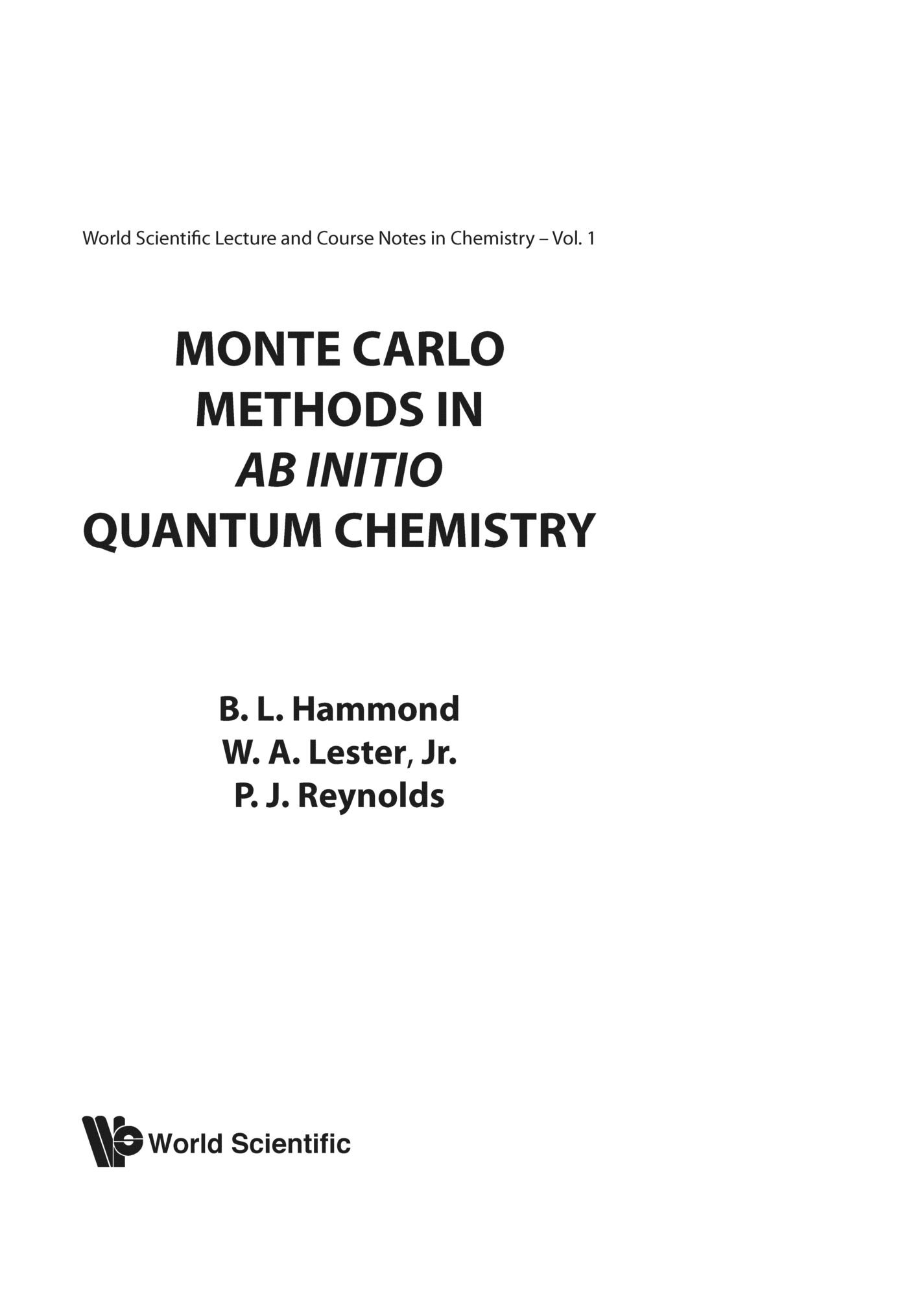

Monte Carlo Methods In Ab Initio Quantum Chemistry: 1 (World Scientific Lecture And Course Notes In Chemistry)
G**N
Most intuitive Quantum Monte Carlo book available.
You will learn:- Shows how an outcome of something dependent on multiple variables is simply the probability density integrated over a certain number of bounds.- Show how the probability density of variables independent of one another are simply the product.- Introduces how matrix multiplication of a transition matrix and column vector whose elements denote the probability of being within a particular state creates a new column vector after a discrete interval.- Establishes a continuous analogy to the discrete transition matrix and summation propagation through introduction to a Green’s function and integration, respectively.- Acceptance of a transition is established through checking if the ratio of new state to old state is greater than a proposed random number.- Derivation of the detailed balance equation allows one to write the acceptance matrix in terms of the Green’s function.- Integration of these multivariable probability densities can be approximated as the summation of different walks propagated independently.- The transition from the Fokker-Planck equation to the construction of the Green’s function could have been clearer, however, other texts have made me realize that after defining how a proposed position of a particle is dependent on the current one, the Green’s function is a product of Gaussian variable probability density functions for all dimensions for however many electrons whose collective center is implied by the Langevin equation with a variance that is the coefficient of the random variable the particle movement is dependent on.- Comprehensive walkthrough of properties of Green’s function whose intention is to propagate a single particle abiding by the Schrodinger equation dependent on the Born Oppenheimer approximation.- Trotter approximation allows one to approximate the Green’s function as the product of kinetic and branching parts whose error is neglected due to the small time propagation interval.- Versions of Diffusion Quantum Monte Carlo are shown with varying potential energy functions, each of which have pseudocode to aid in a simple implementation.There is so much more considering I only discussed up to Chapter 3. Fundamental issues with Diffusion Monte Carlo are established, different optimizations for performance and calculation of excited properties.
Trustpilot
3 days ago
1 day ago